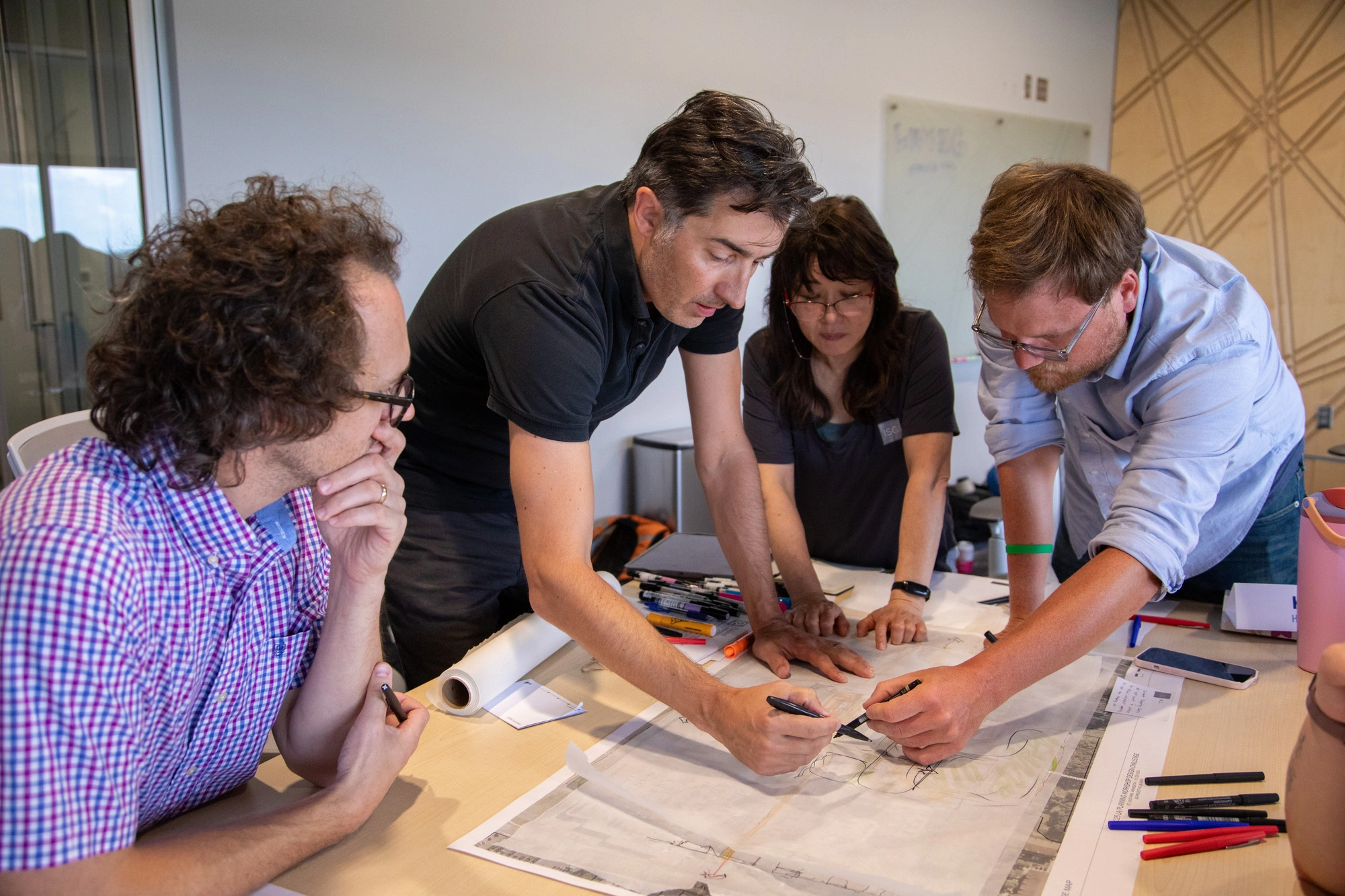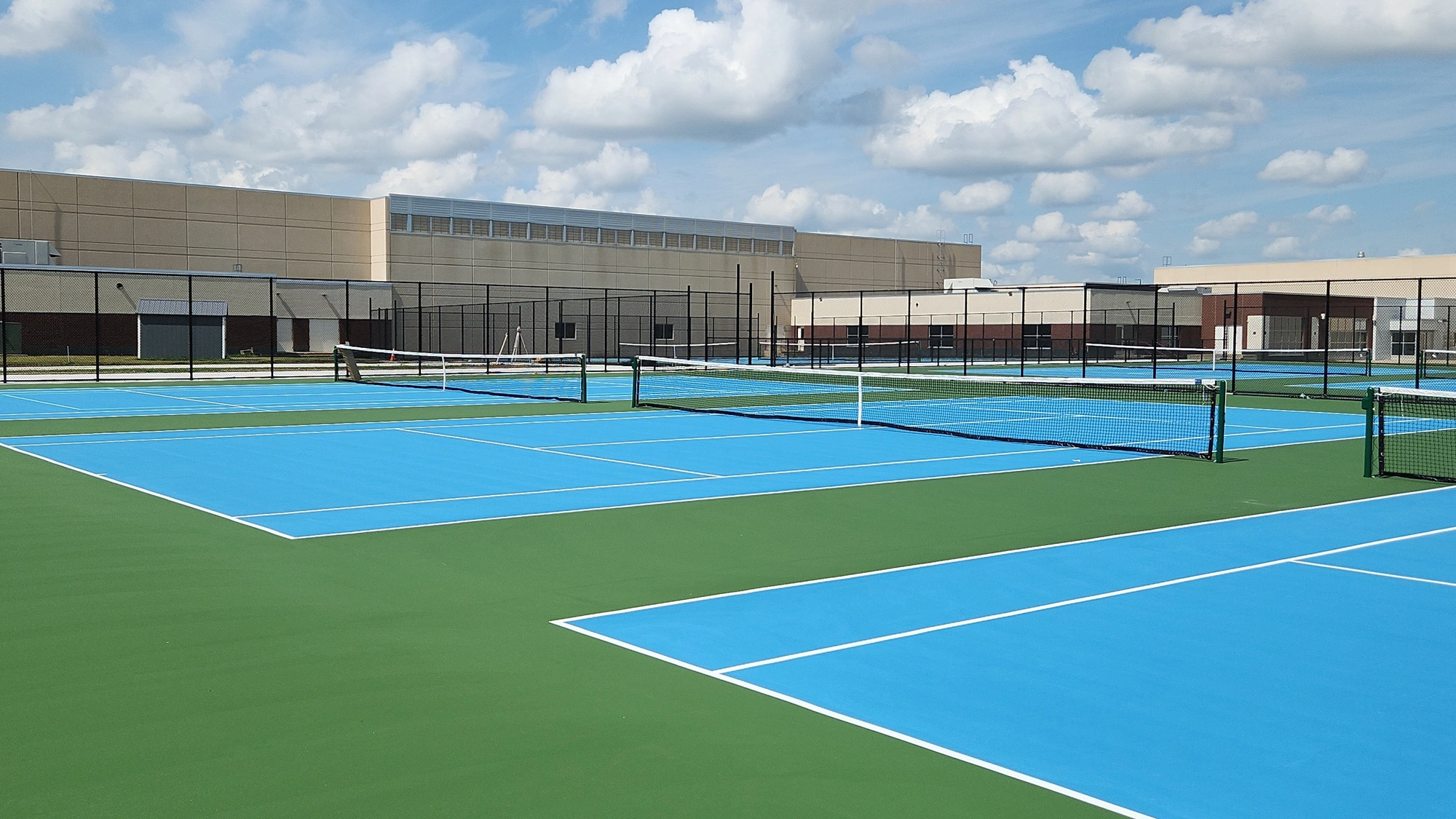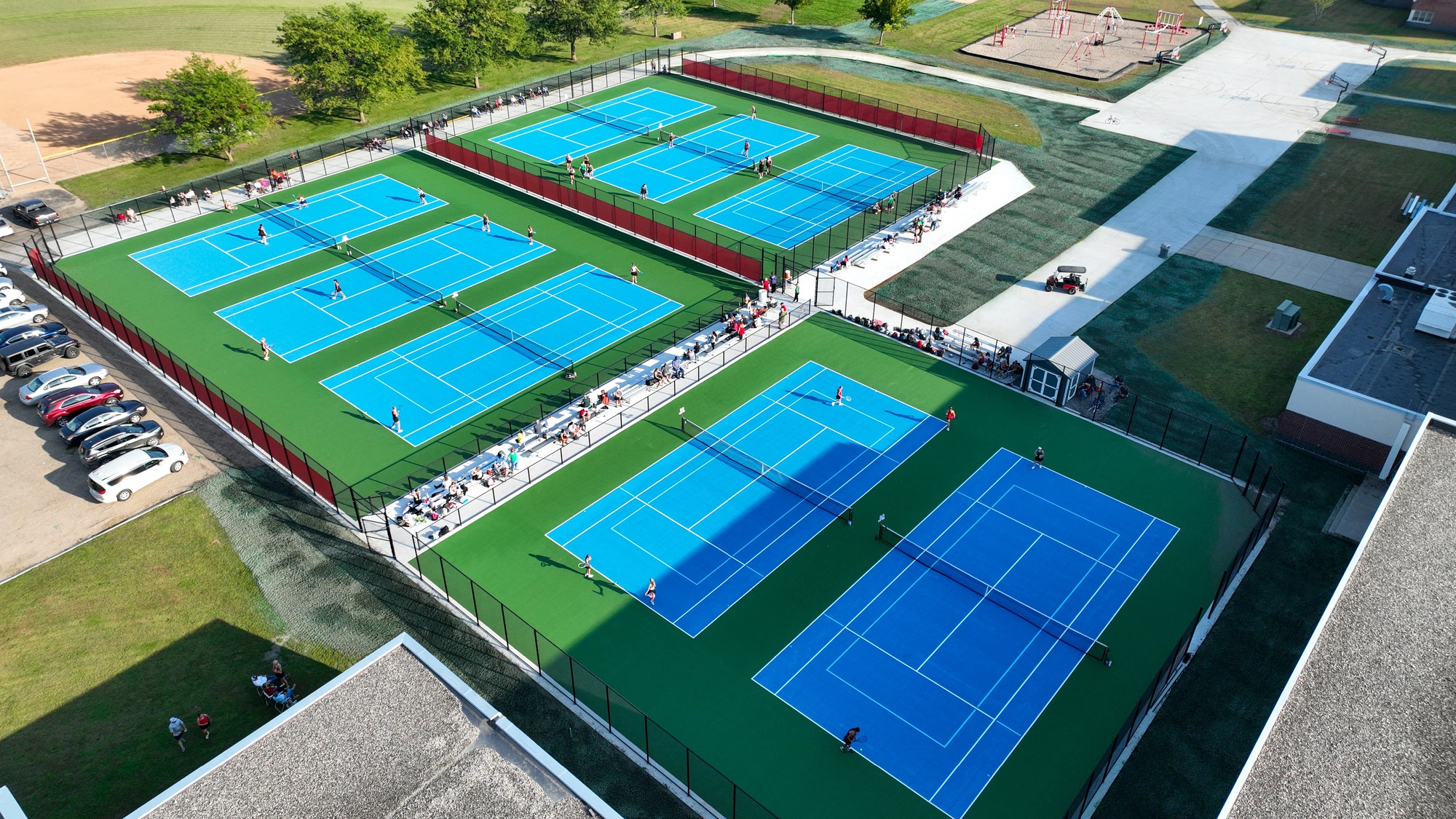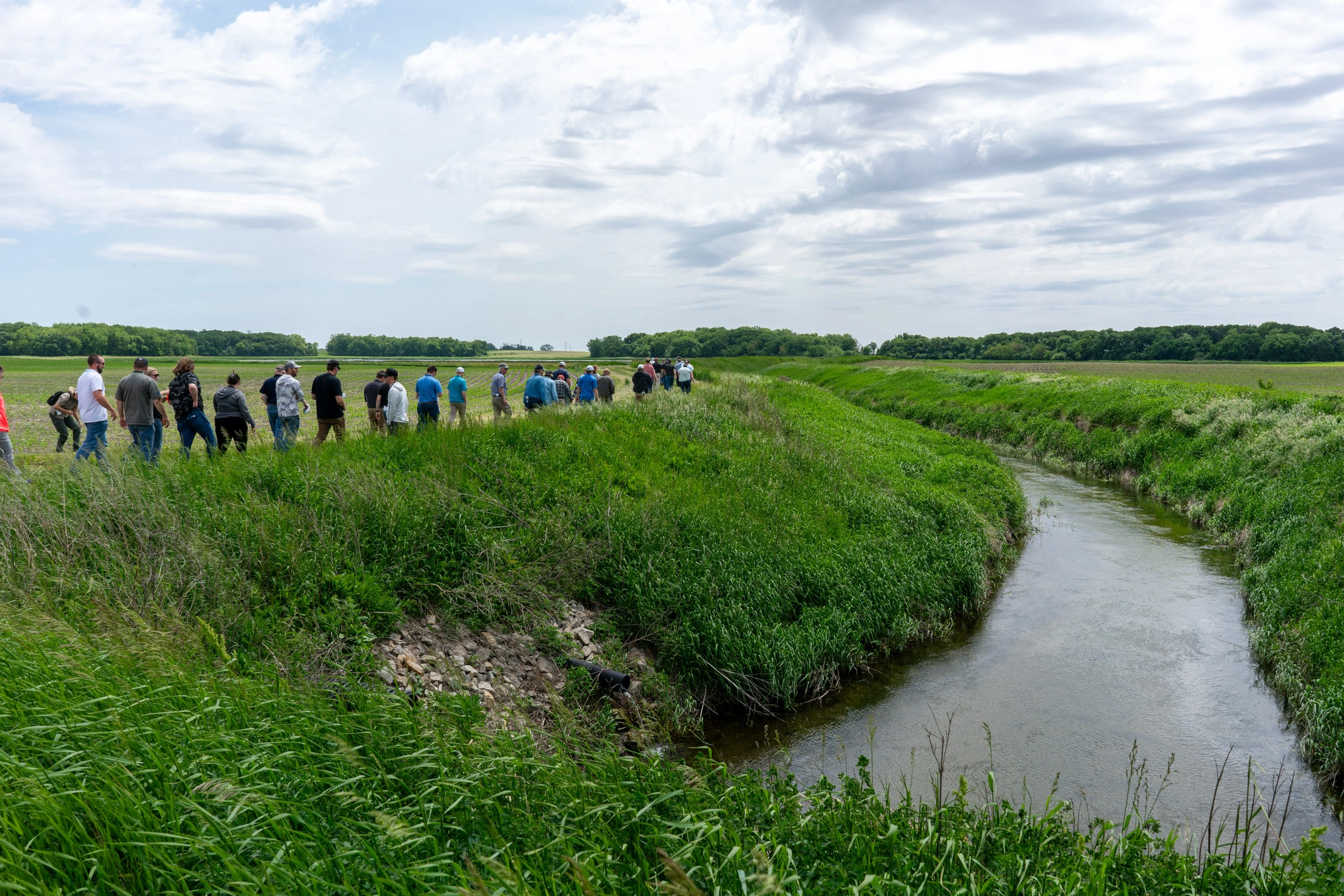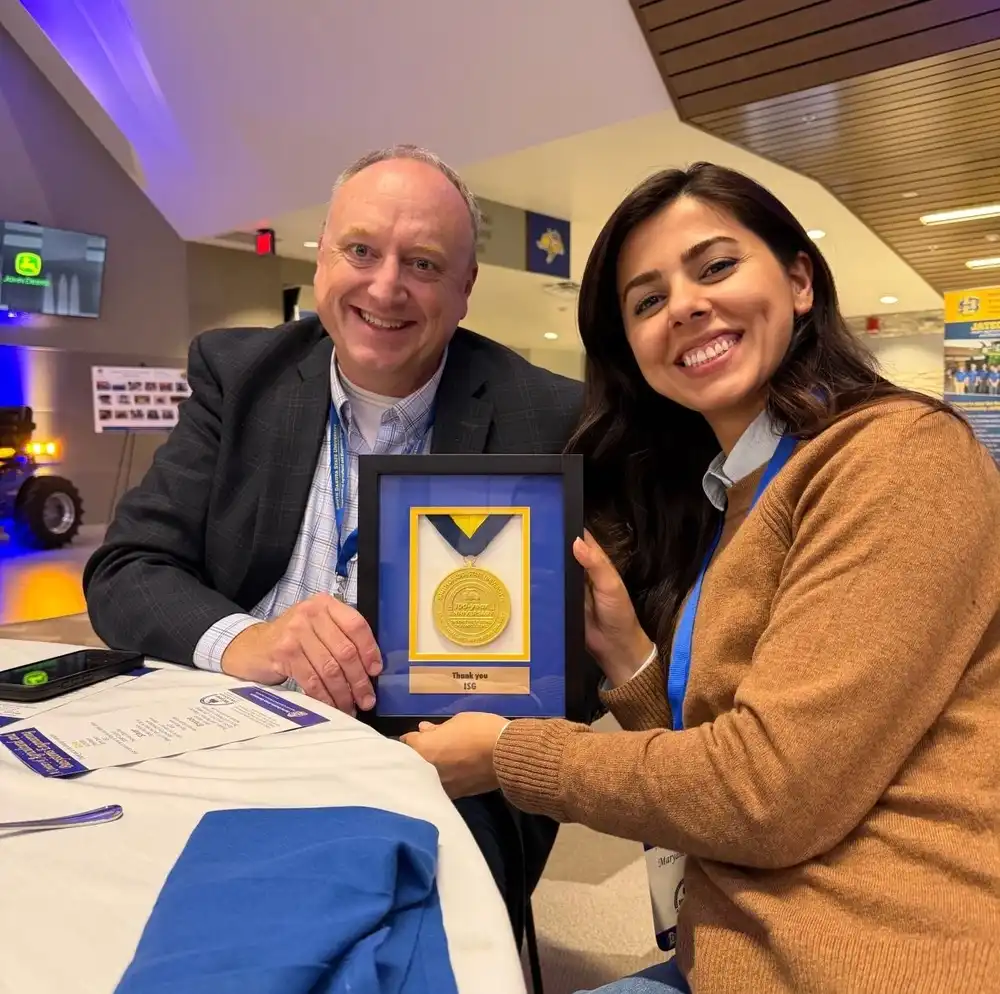Elevating Play: ISG’s Innovative Approach to Multi-Purpose Athletic Field Design
The trend of multi-purpose athletic fields is rapidly growing in K-12 and community sports. This surge is driven by the escalating costs of construction and the increasing need for flexible fields that accommodate multiple sports and extend outdoor seasons. While natural grass fields are preferred for some sports, synthetic turf fields offer distinct advantages, including versatility, reduced maintenance, field consistency, and customizable design elements. These benefits make synthetic turf an appealing option for schools and communities looking to maximize their investment.
ISG's team of sports and recreation designers, many of whom are active coaches, athletes and fans, bring a deep understanding of what makes a great playing surface.
Maximizing Field Usage + Prioritizing Player Safety
Investing in a synthetic turf multi-purpose field is a significant commitment, but one that pays off by enhancing field usage across multiple sports and events. Unlike single-sport fields, which may only be used a few times a year, multi-purpose fields can host numerous sport types, games, practices, and activities, providing a much higher return on investment. Synthetic turf promotes the health and safety of student-athletes by reducing injuries and offering a consistent, level playing surface, regardless of weather conditions.
Active Listening + Tailored Design
ISG's approach to designing multi-purpose fields begins with understanding the needs of user groups. By collaborating closely with teams, leagues, communities, and schools, ISG prioritizes field use based on the level of play, frequency of use, and the specific sports being played. This user-centered design ensures that the field accommodates the program's goals while extending its usability. Cost-efficiency is a critical component of ISG's design philosophy. A key aspect of this approach is the programming process, where we carefully balance scheduling and field use to maximize the budget. Recognizing that many clients are working within financial constraints, we focus on consolidating multiple fields into one or two multi-purpose spaces, meeting diverse sports needs while staying on budget. Additionally, we employ strategies like cooperative purchasing and reusing existing materials to save costs without sacrificing quality.
Each sport has its unique requirements, from field size and equipment to boundary markings and safety zones. For instance, football fields require taller turf pile heights to improve shock absorbency due to the high-impact nature of the sport, while baseball, softball, and soccer fields need turf with shorter fibers to help achieve a more natural ball roll. ISG designers strategically plan for these variations, ensuring the best player experience.
Customizing for Multi-Sport Fields
Portable fencing and strategic field layouts are essential in accommodating multiple sports on a single field. Permanent structures like dugouts and backstops are complemented by moveable elements, including fencing, goalposts, and portable pitching mounds, allowing for seamless transitions between sports. When designing multi-use fields, it’s important to consider factors like sun angles and field extents, ensuring that fields are safe and enhance the overall playing experience. Designs for these fields can go even beyond athletics. Special features, such as tick marks for marching bands, sponsorships, and a “kids zone” can be integrated into the design.
Case Study: Proctor High School Multi-Purpose Field, Proctor, MN
Proctor High School’s investment in a multi-purpose synthetic turf stadium demonstrates ISG’s track record and commitment to performance, safety, and cost-effective design. Partnering with Field Turf and Peterson Construction, ISG transformed the existing natural grass field into a state-of-the-art 145,000-square-footsynthetic turf field, accommodating baseball, softball, football, soccer, and lacrosse. The Field Turf Revolution system was selected for its durability and safety, ensuring consistent performance over time.
A significant challenge of the project was its proximity to a protected Department of Natural Resources (DNR) trout stream. ISG developed innovative stormwater management solutions that utilized the field itself for stormwater management, meeting the DNR’s stringent requirements while preserving natural resources and reducing costs.
As multi-purpose athletic fields continue to rise in popularity, ISG's expertise in synthetic turf design ensures that schools and communities receive the best possible return on their investment. By prioritizing user needs, implementing cost-saving strategies, and delivering innovative, sustainable designs, ISG is at the forefront of this exciting trend in athletics.
Related Articles

.webp)
ISG Recognized as a 2025–26 Emerging Professional Friendly Firm for the Fourth Consecutive Cycle
ISG has been honored as a 2025–26 Emerging Professional Friendly Firm by AIA chapters in North Dakota, South Dakota, Wisconsin, and Minnesota in recognition of its commitment to fair compensation, licensure support, mentorship, and growth for early-career architects.





